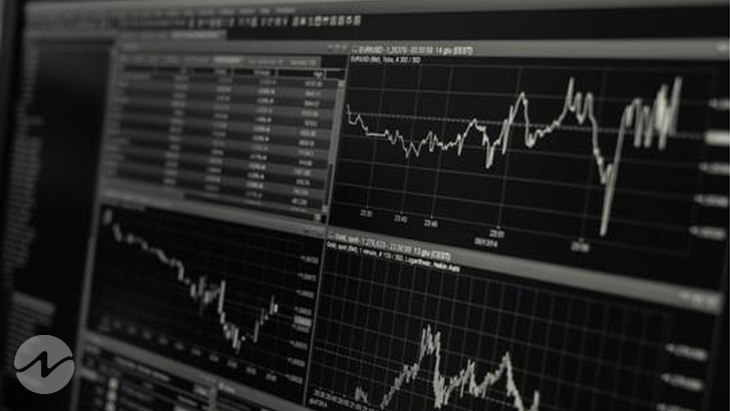If you are in any way involved in the crypto scene—whether as a hardened investor or someone taking the free tour before they decide to jump in—a crypto tracker is absolutely required. There are few ways to get a big picture sense of the crypto market, while also being able to zoom in to the performance of a specific coin. Whether you are looking at trends, spikes/dips, or are trying to find the next big coin before others, it’s going to take a sophisticated tool that will grab vast amounts of data, process it to your tastes, and display it in a way that is intuitive.
While this is a tall order, and many “crypto trackers” are really just poorly designed platforms desperate for unsuspecting subscribers, there are in fact a handful of trackers that are exceptional at what they do. But how do you tell which tracker is “good”? What features are most important? And how do they stack up against each other? Let’s dive in and find out.
What Is Most Important for Users?
To judge the overall quality of a tracker, we need to set up the key elements most important to users. While there is some disagreement on which features are most important, nearly all users will identify security, accuracy, coverage, intuitive UX, and the “extra” features that may be rare or unique to a specific tracker. Another way to look at it is to decide what we use a tracker for? After all, any good tool is designed to solve a problem. We use trackers to track our own portfolio, which is often across coins, wallets, and exchanges. We want to use that insight to create “actionable intelligence”; in other words, we need to know when we should buy, sell, trade, or investigate new coins. Let’s look at each feature to see why it is so critical to solving these problems, and why quality trackers have it.
Strong Security
This is by far the most boring of the features a tracker can have. That is, unless it has poor security, in which case it will not be boring at all in the short time it takes for someone to rob your coins, your info, or both. Trackers must have very strong security, not just from a brute force standpoint, but also in a way where the design lends itself to redundancies in protection, clever ways to detect anomalies, and ways to separate key pieces of information to make stealing part of it useless. A tracker without security is useless.
Accuracy
Similar to security, accuracy is boring but is such a cornerstone to tracking that we don’t even want to think about it. Trackers must first use the platform’s security to ensure the right data is collected, calculated, and communicated to users. And the tracker must make use of reputable oracles and other zero lag, certified data methods of getting coin prices, trends, and other data that must be pulled from outside sources.
Coverage (Exchanges, Coins, Wallets)
In terms of coverage, this feature can vary much more, and needs to serve the needs of its target market. If the tracker is designed for central exchanges, it doesn’t have to expand into DeFi. However, whatever the market is, the tracker should provide as much data as possible for those coins. Trackers can also differ in terms of the sheer volume of exchanges they track, the coins they track, and how many different wallets users can attach to the platform. If your goal is to only track your current portfolio, you might not need much. However, if your goal is to track other coins as potential investments, then the more coverage, the better.
Intuitive UX
This feature is also somewhat on a sliding scale and may differ from one user’s preferences compared to another. However, if you look at the average review scores and details, some platforms can boast with high confidence that most of their users are able to use all basic features, and some advanced features, without requiring training. An intuitive UX is important also to ensure the user doesn’t mistakenly buy or sell something because they didn’t understand how the platform works. While it is ultimately up to the user to know what they are doing before they are making real-coin transactions, a good platform with an intuitive UX will make the job much easier and safer for users.
Extras
Other extras can be all over the place depending on the key value proposition of the tracker platform. Many trackers have their own wallet attached, and many offer trading on the platform itself instead of tracking only. However, others offer key services such as customized alerts, news. Others can offer tools for analyzing and searching for the next “big” coin, giving users a chance to buy a coin just before it jumps in popularity and value.
Top Contenders
While all on this list are solid trackers and may even have unique features, our top picks roughly line up with many other analysts.
CoinStats
Our top pic is CoinStats, especially when diversity is key. Though its security and accuracy are excellent, its value really shines in the coverage offered. It tracks all the top exchanges, plus over 500 others. It can track well over 20,000 cryptocurrencies, including full analytics. Further, it does all this while offering a clean, one page view of your portfolio so you can get an immediate status before diving into detail. The platform’s key extras include a dashboard-type alert system, where you can get updates from over 40 sources; and a specialized toolset for researching and tracking your next investment coin. Perhaps most unique of all, the platform offers live support for its users, something very rare in the crypto world.
Coin Market Manager
This tracker is more on the high tech side, with advanced analytics. It focuses on creating “actionable intelligence” for its users, who are more experienced and know how to digest key information and jump on opportunities. While it can be a big leverage for some, its limitation is in the smaller number of exchanges it supports.
Zapper.fi
While a distant third, Zapper is on the list for those who are strictly DeFi-oriented and are only interested in primarily tracking their portfolios. While it does offer management tools for blockchain wallets, and has a respectable UX, it is not designed for managing extensive portfolios. More so, the platform does not support centralized exchanges.
Pionex
For those interested in trying something very advanced, they might be ready to try Pionex. The platform has bot functionalities that can allow users to automate certain aspects of managing their portfolio. While this can be a big advantage if used correctly, it is also not without risk (otherwise everyone would be using it), so it’s important to not give up knowledge when trusting automated algorithms.
Conclusion
Trackers are certainly not created equal. The higher quality trackers do, however, share key aspects that users rely on and come to expect. While there are different trackers that are designed for niche markets, our top full service picks offer a great deal for anyone from newbies to crypto veterans.








